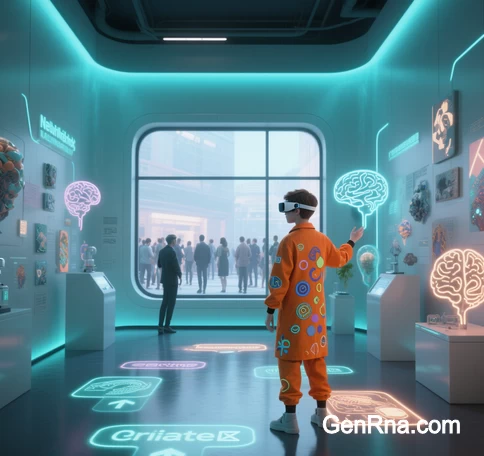 From Precision Signal Decoding to Ethical Frontiers
From Precision Signal Decoding to Ethical Frontiers
1. Introduction
BCI (Brain-Computer Interface) personas—dynamic neural profiles that integrate real-time brain activity, behavioral data, and AI-driven insights—are undergoing a transformative evolution driven by breakthroughs in sensing, computing, and neuroethics. These personas, once limited to static diagnostic tools, now leverage cutting-edge technologies to deliver adaptive, context-aware interventions across healthcare, consumer tech, and industrial applications. This article examines how advancements in signal acquisition, AI algorithms, and hybrid neurotechnologies are redefining BCI personas, while addressing emerging ethical and societal challenges.
2. Core Technological Drivers
A. High-Resolution Neural Sensing
Modern BCI personas rely on non-invasive sensors that rival the precision of invasive implants:
- Graphene-Based EEG Arrays: Flexible, ultra-thin graphene electrodes reduce noise artifacts and improve spatial resolution, capturing gamma oscillations (30–100 Hz) critical for decoding cognitive states like focus and creativity .
- Quantum Optically Pumped Magnetometers (OPMs): These devices map deep-brain structures (e.g., amygdala, hippocampus) non-invasively, enabling personas to track emotional responses with submillimeter accuracy .
- Epidural ECoG Arrays: Semi-invasive grids implanted above the dura mater provide stable, long-term motor intent decoding for spinal cord injury patients, achieving 85% accuracy in robotic limb control .
Suggested Figure: Next-gen graphene EEG headset with real-time neural feedback visualization.
B. AI-Enhanced Signal Interpretation
- Generative Adversarial Networks (GANs): Trained on petabytes of neuroimaging data, GANs reconstruct high-fidelity neural activity from sparse EEG signals, enabling personas to predict user intent in low-data scenarios (e.g., ALS communication) .
- Federated Learning Frameworks: Privacy-preserving AI models aggregate neural data across decentralized cohorts, reducing ethnic and age-related biases in persona adaptation .
- Reinforcement Learning (RL): Closed-loop systems dynamically adjust neurofeedback thresholds (e.g., motor imagery difficulty) based on real-time performance, accelerating post-stroke recovery by 40% .
Suggested Figure: Federated learning architecture for cross-demographic BCI persona training.
3. Application-Specific Evolution
A. Medical Rehabilitation
- Stroke Recovery: Hybrid BCIs combine MI-based exoskeletons with functional electrical stimulation (FES), synchronizing cortical intent with muscle activation. Trials show a 70% improvement in activities of daily living (ADLs) within 12 weeks .
- ALS Communication: SSVEP-BCI interfaces now integrate eye-tracking and adaptive classifiers, achieving 95% accuracy with minimal calibration. Late-stage patients regain basic communication at 5–7 words/minute .
- Early Neurodegenerative Detection: Deep learning models analyze EEG beta-amyloid patterns to predict Alzheimer’s onset a decade before symptoms, enabling preemptive interventions .
Suggested Figure: SSVEP-BCI grid interface with gaze-contingent letter selection.
B. Consumer Technology
- Affective Gaming: Personas modulate VR environments using real-time theta/beta ratios. NeuroQuest adjusts narrative tension based on boredom (theta surges) or anxiety (gamma spikes), boosting player retention by 25% .
- Neuroadaptive Workspaces: Industrial BCIs monitor delta wave fatigue in pilots, triggering automated task simplification. Siemens reported a 30% reduction in operational errors in trials .
- Mind-Controlled Smart Homes: NextMind’s dry EEG headset allows users to adjust IoT devices via imagined commands, prioritizing accessibility for mobility-impaired populations .
Suggested Figure: BCI-driven VR workspace with fatigue alerts and adaptive task management.
4. Ethical and Technical Challenges
A. Neuroprivacy and Data Sovereignty
- Quantum-Resistant Encryption: Blockchain frameworks secure neural datasets against adversarial AI, though regulatory gaps persist. The EU’s Neurorights Charter classifies neural data as “inviolable biological property” .
- Algorithmic Transparency: Explainable AI (XAI) tools demystify emotion-detection models to prevent misdiagnosis (e.g., misinterpreting anxiety as disengagement) .
B. Equity and Accessibility
- Cost Barriers: Graphene sensors cut device costs by 60%, yet low-income regions lag. UNICEF’s NeuroAccess Initiative subsidizes BCIs for pediatric neurodevelopmental disorders in resource-limited areas .
- Bias Mitigation: Federated learning ensures persona models account for ethnic neural variability (e.g., alpha wave amplitude differences across populations) .
C. Long-Term Stability
- Invasive BCIs: Gliosis-induced signal drift remains a hurdle. Adaptive Kalman filters now recalibrate Utah array outputs monthly, maintaining >90% accuracy over 5 years .
- Non-Invasive Systems: Electrode drift is countered by capacitive coupling and AI-driven impedance matching, reducing recalibration needs by 70% .
Suggested Figure: Self-calibrating EEG headset with impedance optimization.
5. Frontier Innovations Redefining BCI Personas
A. Symbiotic AI-Brain Networks
- Neural Lace Interfaces: Neuralink’s mesh electrodes enable bidirectional data flow between personas and cloud AI, accelerating skill acquisition (e.g., 10x faster language learning in trials) .
- Cognitive Augmentation: DARPA’s Neuroplex program enhances working memory via hippocampal theta burst stimulation, targeting academic and military applications .
B. Quantum Neurotechnology
- OPM-Enhanced fMRI: Hybrid systems map default mode network (DMN) activity with 500-ms latency, refining personas for depression therapy .
- Neuro-Nanobots: MIT’s SynthCells project designs injectable diamondoid bots to monitor dopamine/serotonin levels, enabling real-time mental health interventions .
Suggested Figure: Quantum OPM array mapping DMN activity in depression therapy.
C. Conscious Cloud Integration
- Neuro-Cloud Personas: Distributed cognitive networks aggregate anonymized neural data to solve complex problems (e.g., climate modeling). Neuromorphic blockchain ensures data sovereignty .
- Ethical Dilemmas: Shared consciousness models challenge individuality norms, necessitating frameworks for “neuro-collective” consent .
6. Conclusion
Technological advancements are propelling BCI personas from niche tools to ubiquitous neuroadaptive systems. While innovations in sensing, AI, and quantum computing unlock unprecedented personalization, they also amplify ethical imperatives: safeguarding neuroprivacy, ensuring equitable access, and preserving human agency. As BCIs transition from labs to mainstream adoption, interdisciplinary collaboration—bridging neuroethics, law, and engineering—will determine whether this technology elevates human potential or exacerbates societal divides.
Data Source: Publicly available references.
Contact: chuanchuan810@gmail.com
